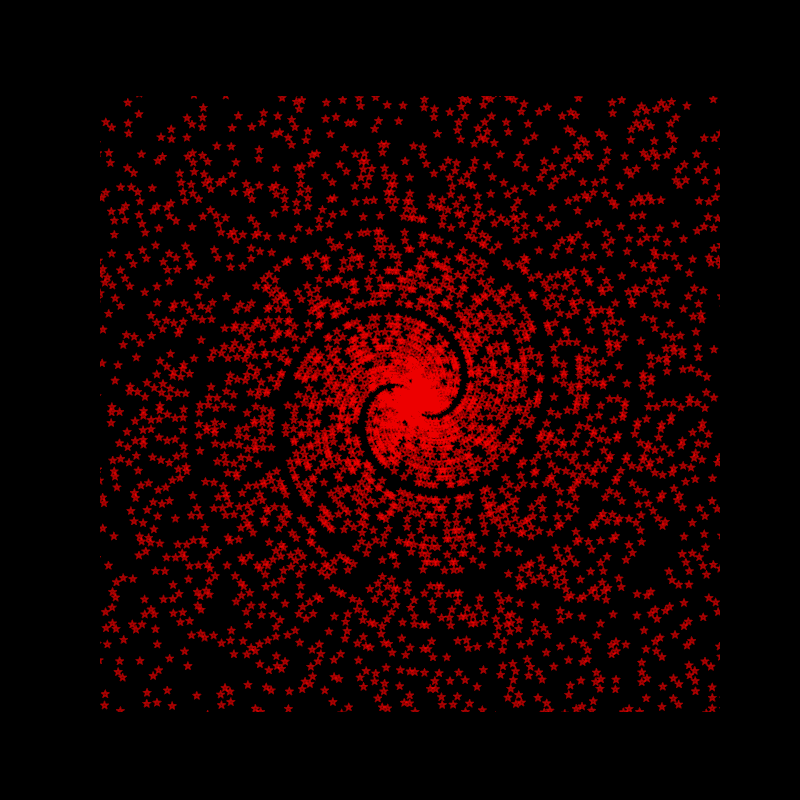Graphing using Matplotlib and Creating Interactive Plots and Animations
This data set comes from plotting the Prime numbers as the raduis and angle in polar coordinates. The spiral artifacts at smaller prime numbers and the transition seen to rays is documented here: Meaning of rays in polar plot of prime numbers Asked by user dwymark and answer by Greg Martin. A complete video animation and explaination on YouTube channel 3Blue1Brown created by Youtuber Grant Sanderson. The video Why do prime numbers make these spirals? | Dirichlet’s theorem and pi approximations
Using Jupyter Lab to create a dataset and pandas dataframe
Introduction to 2d Plotting
[1]:
import sympy
import numpy as np
import pandas as pd
import matplotlib.pyplot as plt
from matplotlib.widgets import Slider
from ipywidgets import interact, widgets
%matplotlib widget
plt.style.use('dark_background')
Prime numbers between 0 and 100 using the sybmolic math library.
[2]:
num = 100
primes=list(sympy.primerange(0, num))
print(primes)
print("Number of primes under", num, "is", len(primes))
[2, 3, 5, 7, 11, 13, 17, 19, 23, 29, 31, 37, 41, 43, 47, 53, 59, 61, 67, 71, 73, 79, 83, 89, 97]
Number of primes under 100 is 25
Convert the primes to a Cartesian coordinate system assuming the prime number represents both the degrees and radius of a polar coordinate.
x = r cos(θ)
y = r sin(θ)
Define a function for X and Y conversion.
[3]:
def Xcartesian_from_polar_coordinates(x):
return x * np.cos(x)
def Ycartesian_from_polar_coordinates(y):
return y * np.sin(y)
Create a pandas dataframe of prime numbers, labeling the column “Primes” and display the first 5 rows.
[4]:
df = pd.DataFrame(list(sympy.primerange(0, 500000)), columns=['Primes'])
df.head()
[4]:
| Primes | |
|---|---|
| 0 | 2 |
| 1 | 3 |
| 2 | 5 |
| 3 | 7 |
| 4 | 11 |
Calculate the coordinate conversion of the Prime numbers to X and Y columns in the dataframe. Save the pandas dataframe to a csv file or any other supported file time in the pandas library such as pickle, json, xml, HDF, parquet, etc.
[5]:
df['x']=df['Primes'].apply(Xcartesian_from_polar_coordinates)
df['y']=df['Primes'].apply(Ycartesian_from_polar_coordinates)
df.set_index('Primes', drop=True).to_csv('primes.csv')
Now the saved file can be used as the input to this analysis or in another program. Read back in the CSV file, set the Index to the Prime numbers, and display the first 5 rows.
[6]:
df= pd.read_csv('primes.csv').set_index('Primes', drop=True)
df.head()
[6]:
| x | y | |
|---|---|---|
| Primes | ||
| 2 | -0.832294 | 1.818595 |
| 3 | -2.969977 | 0.423360 |
| 5 | 1.418311 | -4.794621 |
| 7 | 5.277316 | 4.598906 |
| 11 | 0.048683 | -10.999892 |
[7]:
fig, ax = plt.subplots(figsize=(8,8))
plt.axis("off")
# Set a color map
my_cmap = plt.get_cmap('hsv')
# Make a scatter plot
plt.scatter(df['x'],
df['y'],
alpha = 0.5,
c = (df['x']**2 + df['y']**2),
cmap = my_cmap, marker ='*')
fig.savefig('images/Figure1.png', dpi=fig.dpi)
# Interactive zoom slider
ax1 = plt.gca()
x_min, x_max = ax1.get_xlim()
def update(zoom=.01):
if zoom is not None:
zoom_factor = zoom /100
x_center = (x_min + x_max ) / 2
new_min = x_center - (x_max - x_min)/ 2 * zoom_factor
new_max = x_center + (x_max - x_min)/ 2 * zoom_factor
if new_max != new_min:
ax1.set_xlim(new_min,new_max)
ax1.set_ylim(new_min,new_max)
fig.canvas.draw_idle()
interact(update, zoom=widgets.IntSlider(min=1, max=90, step=1, value=5));

Turn the plot into function to create a series of plots
[8]:
def plot_primes(primes_under = 1000):
fig, ax = plt.subplots(figsize=(8,8))
plt.axis("off")
# Set a color map
my_cmap = plt.get_cmap('hsv')
# index of the primes under a give number
end_prime = df[df.index < primes_under].index[-1]
title_text= "Prime numbers under " + str(primes_under)
fig.suptitle( title_text )
plt.scatter(df['x'].loc[2:end_prime],
df['y'].loc[2:end_prime],
alpha = 0.5,
c = (df['x'].loc[2:end_prime]**2 + df['y'].loc[2:end_prime]**2),
cmap = my_cmap, marker ='*')
ax1 = plt.gca()
x_min, x_max = ax1.get_xlim()
filename = "images/" + title_text + ".png"
fig.savefig(filename.replace(" ", "-"), dpi=fig.dpi)
[9]:
for i in [1000, 10000, 20000, 50000, 100000, 500000]:
plot_primes(i)
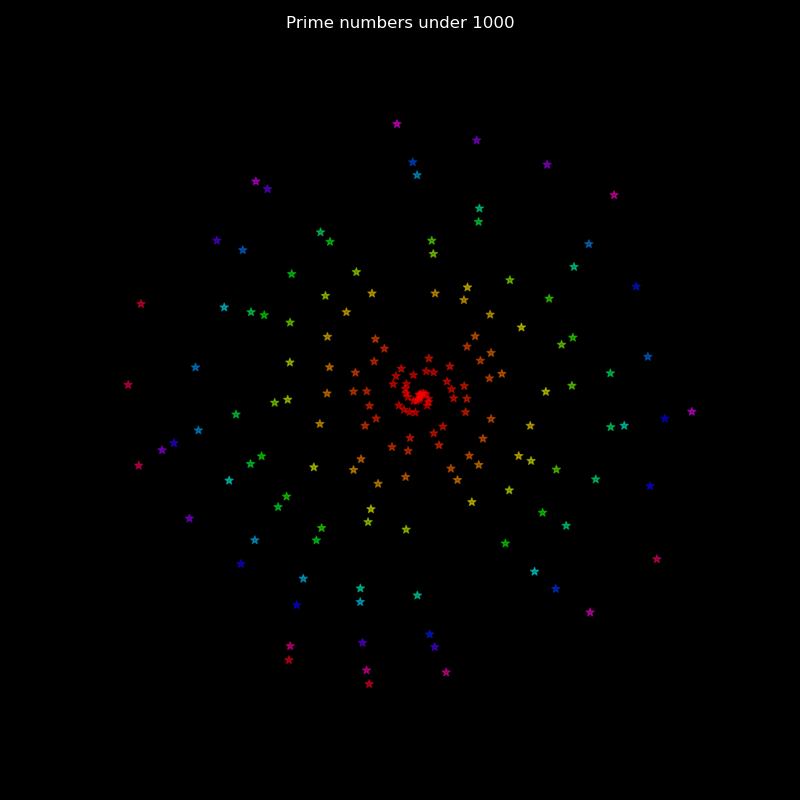
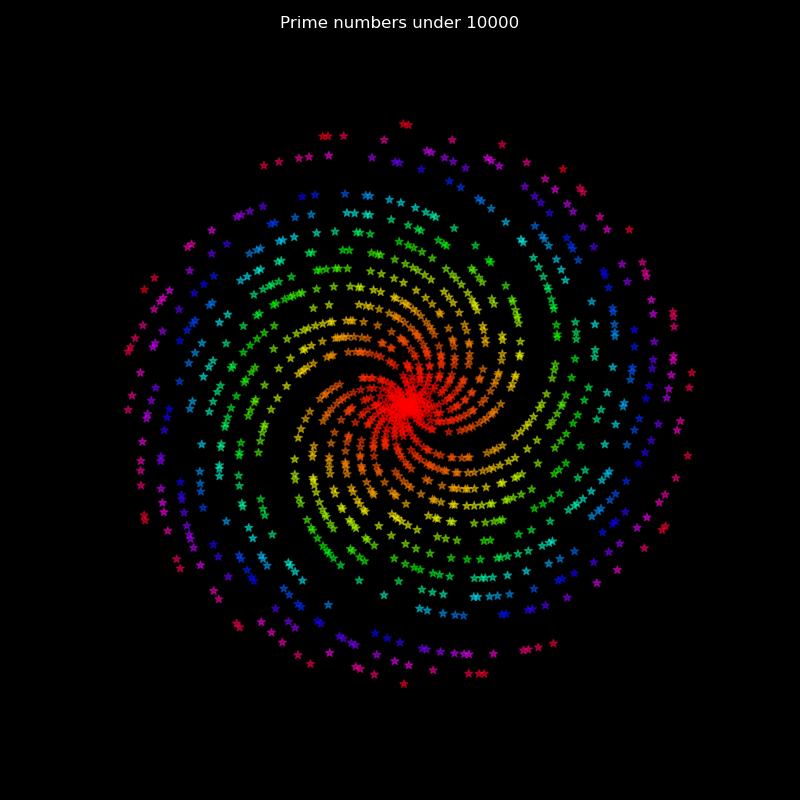
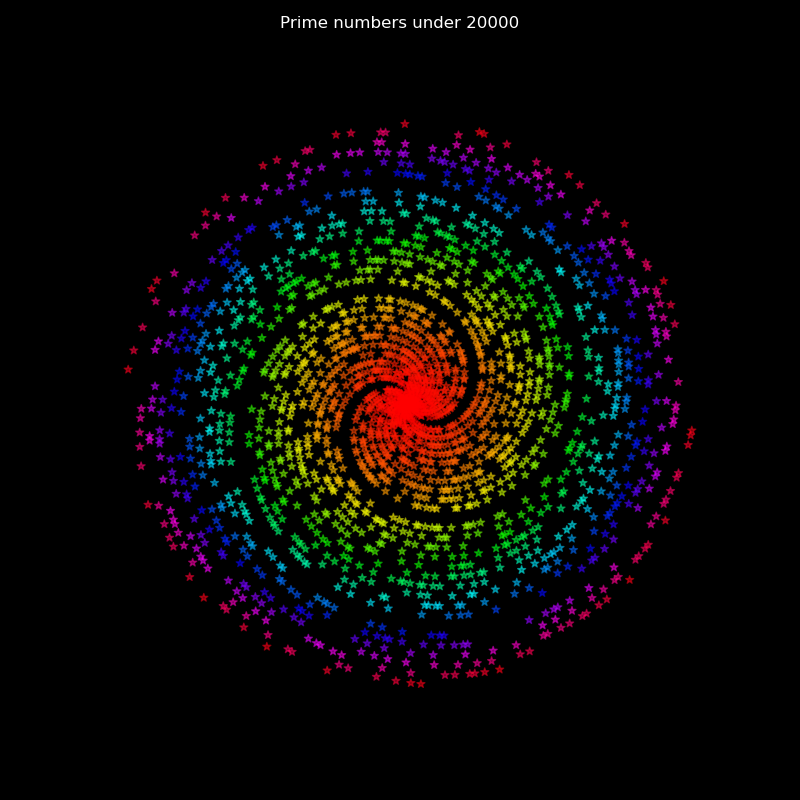
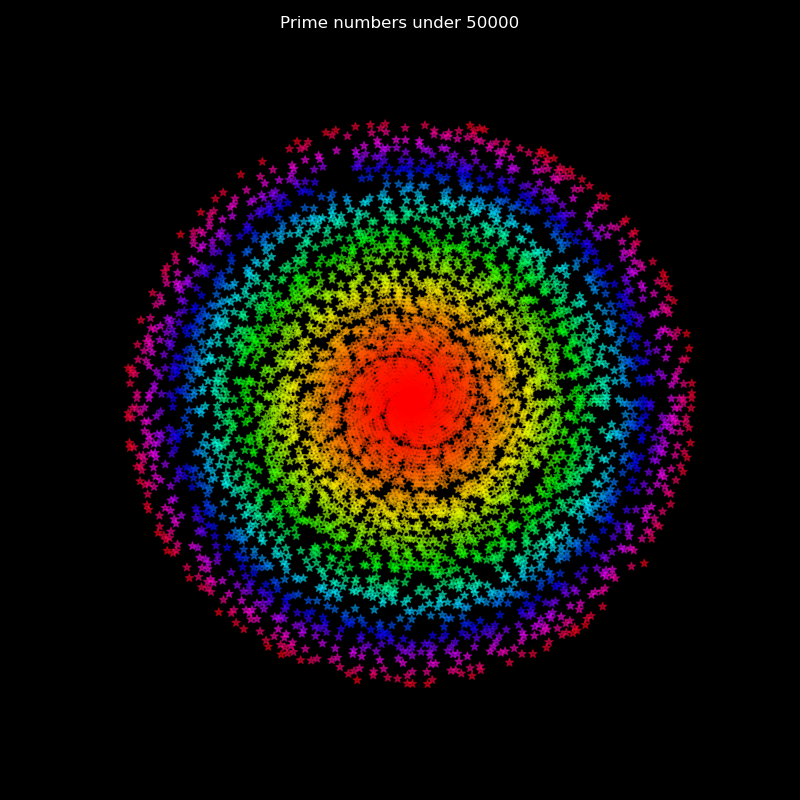
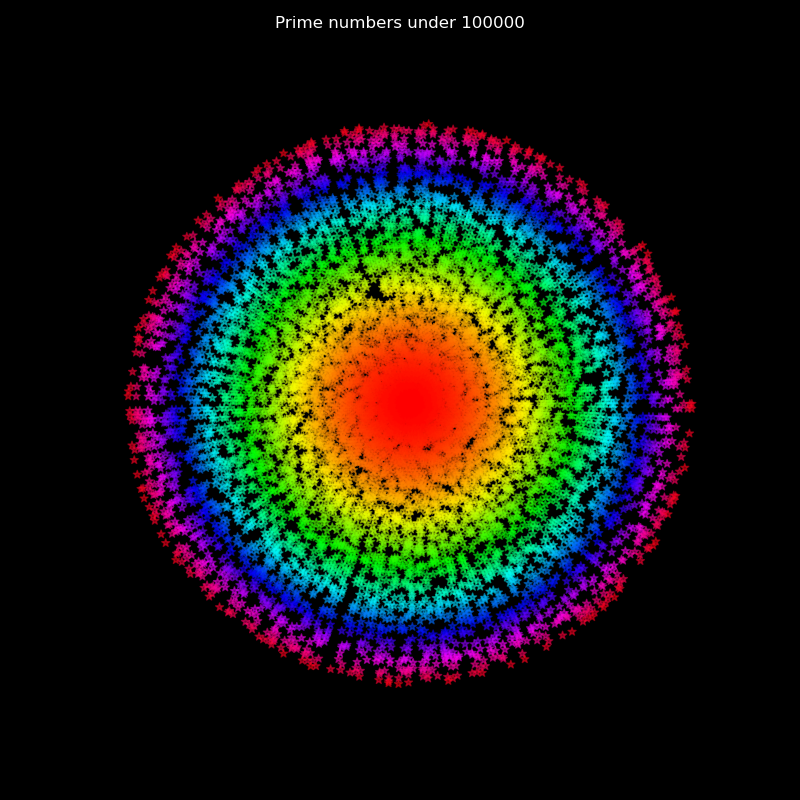
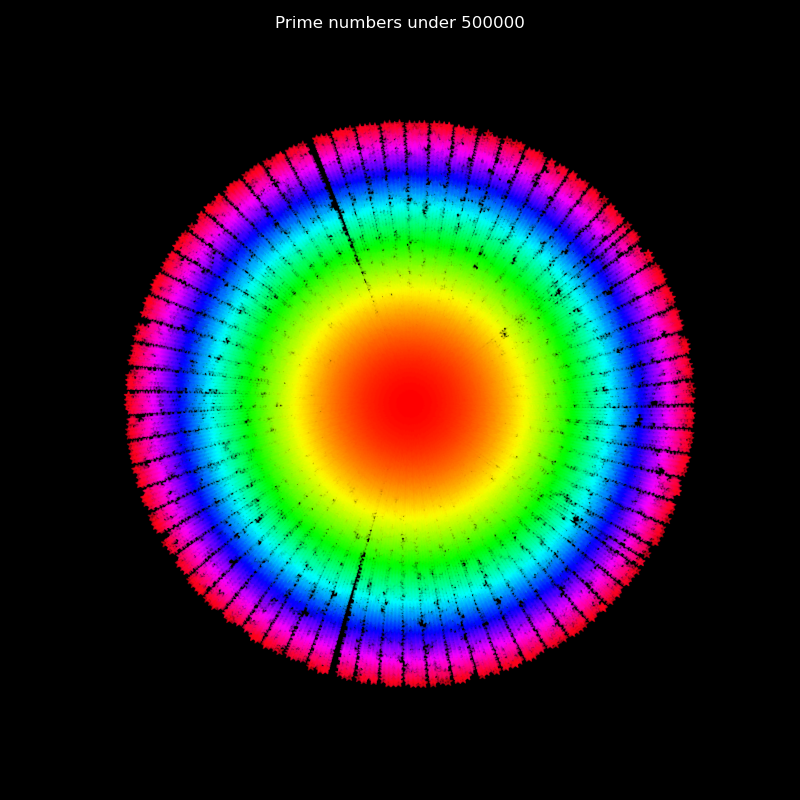
Create a animation
[10]:
import matplotlib.animation as animation
[11]:
ani = animation.FuncAnimation(fig=fig, func=update, frames=100, interval=.1)
plt.show()
[12]:
ani.save(filename="images/prime_animation_polar.gif", writer="pillow")
